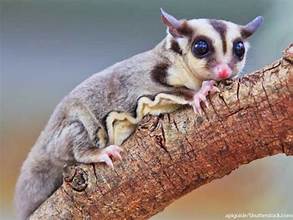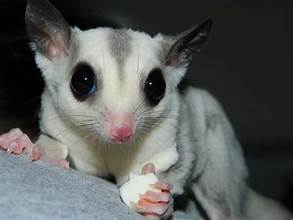Amphibians, with their striking appearance, interesting behaviors, and relatively low maintenance requirements, are truly fascinating and unique pets. Whether you’re captivated by the vibrant colors of dart frogs or the endearing movements of salamanders, understanding their care needs is crucial for keeping them healthy and happy.
This comprehensive guide covers everything you need to know about caring for frogs, newts, and salamanders, including their habitats, diet, health, and special considerations. It will leave you feeling reassured and well-informed.
Understanding Amphibians
Amphibians are cold-blooded animals that live dual lives. They start in water as larvae and transition to land (or semi-aquatic) as adults. Their skin absorbs water and oxygen, making their environment critical to survival.
1. Frogs
Frogs are among the most widespread amphibian pets due to their diversity in size, color, and habitat preferences.
Popular Pet Frogs
- Poison Dart Frogs:
Small, vibrant, and best for display tanks.
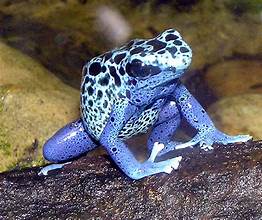
- Tree Frogs (e.g., Red-Eyed Tree Frogs):
Arboreal species are known for their climbing abilities.
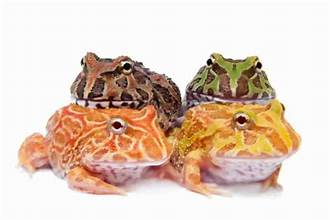
Terrestrial and known for their large size and appetite.
- African Dwarf Frogs:
Fully aquatic and peaceful.
Habitat Needs
- Tank Size:
Minimum 10 gallons for tiny frogs; larger frogs may need 20–30 gallons.
- Temperature:
72–82°F (species-dependent); use a heat mat or lamp if necessary.
- Humidity:
60–80% for most species; mist the tank daily.
- Substrate:
Use coconut fiber, moss, or soil for terrestrial frogs; avoid gravel that could cause impaction.
- Accessories:
Provide tree frogs hiding spots (bark, plants) and climbing structures.
Diet
- Food:
Live insects like crickets, fruit flies, and mealworms. Some aquatic species eat brine shrimp or bloodworms.
- Feeding Frequency:
Juveniles daily; adults 2–3 times per week.
- Supplements:
Dust food with calcium and vitamin D3 powder every other feeding.
2. Newts
Newts are semi-aquatic amphibians with smooth or slightly rough skin, thriving in water and land environments.
Popular Pet Newts
- Fire-Bellied Newts:
They are known for their bright orange bellies and semi-aquatic nature.
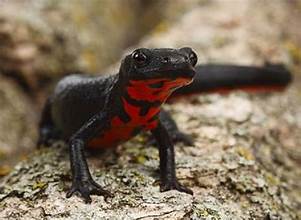
- Eastern Newts:
They are found in the U.S. and are known for their striking yellow spots.
Habitat Needs
- Tank Size:
10–20 gallons for 1–2 newts.
- Water and Land Ratio:
Provide a shallow pool and basking areas of 70% water and 30% land.
- Temperature:
65–75°F; avoid excessive heat.
- Filtration:
Use a gentle filter to maintain water cleanliness without creating strong currents.
- Substrate:
Smooth gravel or aquatic soil is used for the water area, and moss or bark is used for the land section.
- Accessories:
Provide logs, live plants, and hiding spots.
Diet
- Food:
Earthworms, bloodworms, daphnia, and small pieces of fish.
- Feeding Frequency:
Every 2–3 days.
- Supplements:
Calcium powder occasionally for balanced nutrition.
3. Salamanders
Salamanders are primarily terrestrial or semi-aquatic and are admired for their vibrant patterns and gentle movements.
Popular Pet Salamanders
- Tiger Salamanders:
They are known for their large size and striking yellow-and-black markings.
They are fully aquatic and famous for their external gills and permanent larval stage.
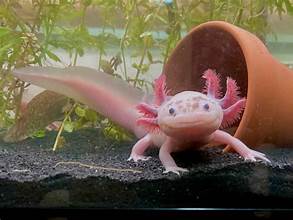
- Fire Salamanders:
Bright black-and-yellow patterns make them visually appealing.
Habitat Needs
- Tank Size:
20 gallons for terrestrial species; larger tanks for aquatic salamanders like axolotls.
- Temperature:
60–72°F (cooler than frogs and newts).
- Substrate:
Use soil or leaf litter for terrestrial species; sand or bare bottom for aquatic salamanders.
- Humidity:
Keep the enclosure moist but not waterlogged.
- Accessories:
Provide hiding spots like cork bark, rocks, or ceramic hides.
Diet
- Food:
Live prey like crickets, earthworms, and small feeder fish for terrestrial species; axolotls eat bloodworms, brine shrimp, and sinking pellets.
- Feeding Frequency:
2–3 times per week.
- Supplements:
Dust with calcium occasionally.
General Care Tips for All Amphibians
1. Water Quality
- Use dechlorinated water or bottled spring water.
- For aquatic or semi-aquatic species, maintain pH levels between 6.5–7.5.
- Perform partial water changes weekly to keep the habitat clean.
2. Handling
- Avoid excessive handling, as amphibians have sensitive, permeable skin.
- Wash hands thoroughly before and after contact to prevent transferring oils or bacteria.
3. Lighting
- Use low-intensity UVB lighting for species requiring it (consult species-specific needs).
- Avoid overly bright lights, as amphibians are nocturnal or crepuscular.
4. Health Concerns
- Signs of Illness:
Lethargy, refusal to eat, discolored skin, or bloating.
- Common Diseases:
- Chytridiomycosis:
A fungal infection affects the skin.
- Parasites:
Internal or external, often from live prey.
- Metabolic Bone Disease (MBD):
Due to calcium deficiency.
- Prevention:
Maintain proper diet, humidity, and cleanliness.
Special Considerations for Amphibians
- Commitment:
Amphibians can live 5–20+ years, depending on the species.
- Legalities:
Check local laws, as some species are protected or restricted.
- Ethical Sourcing:
Purchase captive-bred amphibians to avoid contributing to habitat destruction and overharvesting.
Final Thoughts
Amphibians make fascinating and rewarding pets when their needs are met. You can ensure your frogs, newts, or salamanders live long, healthy lives by providing a proper habitat, a balanced diet, and a clean environment. Whether you’re a beginner or an experienced herpetologist, understanding the care requirements of these captivating creatures is the first step to responsible ownership.
Would you like detailed care tips for a specific species? Let me know!


